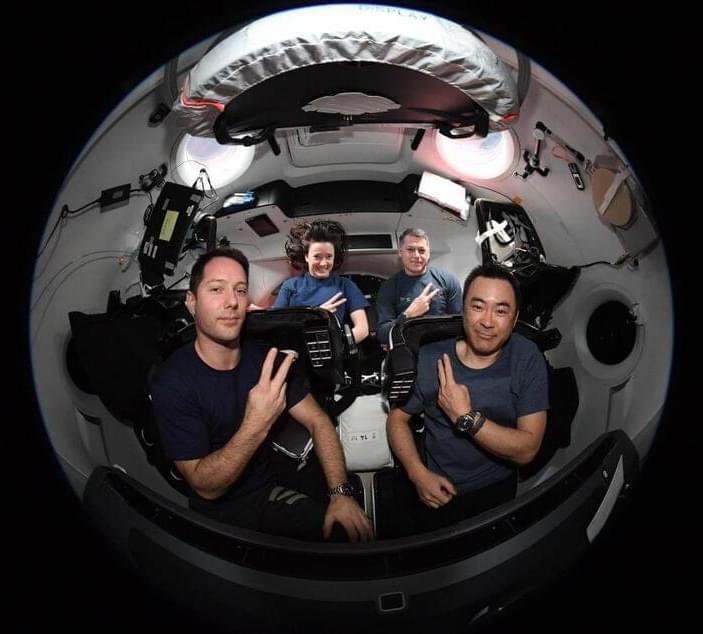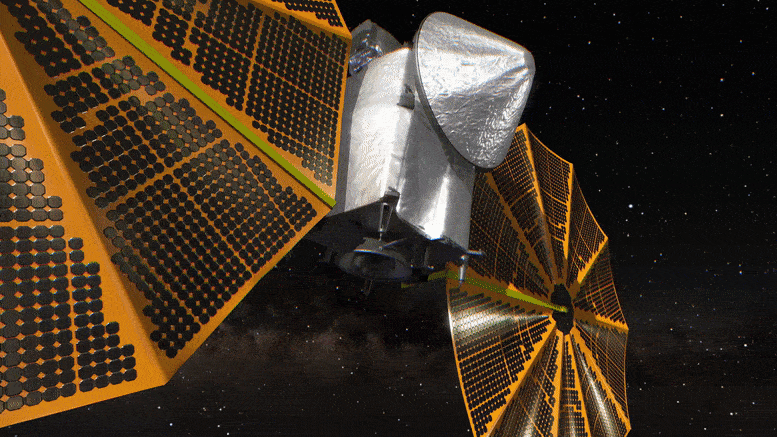Recent research suggests that our chance of death plateaus after we reach a certain age. But that doesn’t mean humans can live forever.



The astronauts will now undock Monday and splashdown late Monday night.
SpaceX and NASA have pushed back the return to Earth of four astronauts on the International Space Station to late Monday (Nov. 8) due to bad weather at their splashdown site.
The astronauts of SpaceX’s Crew-2 mission for NASA will now undock from the space station Monday afternoon at 2:05 p.m. EST (1905 GMT) — a day later than planned — and splash down that night off the Florida coast at 10:33 p.m. EST (0333 GMT). You can watch it all live here and on the Space.com homepage, courtesy of NASA TV, beginning at 11:45 a.m. EST (1645 GMT).

The USA Government is secretly working on a real Anti Aging Pill which aims to extend peoples lifespan and improve their health. This new longevity research project even made Aubrey De Grey interested as he said in an interview. Although he’s working on other kinds of medication to make people live forever or at least to stop peoples aging.
Dr. David Sinclair’s main research interest is the epigenetics of aging, with a focus on epigenetic reprogramming of aging, NAD+ metabolism and sirtuins, and NAD+ precursors like NR and NMN. David Sinclair is also working on supplements that are supposed to slow down the aging process.
–
If you enjoyed this video, please consider rating this video and subscribing to our channel for more frequent uploads. Thank you! smile
–
TIMESTAMPS:
00:00 The first of its kind.
02:28 How this Pill is going to help.
04:48 Aubrey De Grey’s Opinion.
05:43 The Future of Longevity Biotechnology.
07:07 Last Words.
–
#aubreydegrey #longevity #aging
Artificial General Intelligence has been pursued by the biggest tech companies in the world, but recently Google has announced their new revolutionary AI algorithm which promises to create the most performant and best Artificial Intelligence Models in the world. They call it Pathways AI, and it’s supposed to behave just like the human brain and enable smart Robots which are superior to humans and help us do chores in our own apartments. This move by Google is somewhat scary and terrifying, as it gives them a lot of power over the AI industry and could enable them to do evil things with their other secret projects they’re working on. One thing is for sure though, AGI and the Singularity isn’t as far of as even Ray Kurzweil thinks according to Jeff Dean from Google AI and Deepmind. Maybe Elon Musk’s warnings about AI have been justified.
–
TIMESTAMPS:
00:00 Google’s Path to AI Domination.
00:56 What is Pathways?
02:53 How to make AI more efficient?
05:07 Is this Artificial General Intelligence?
07:42 Will Google Rule the world and the AI Industry?
09:59 Last Words.
–
#google #ai #agi

The Lucy spacecraft continues to operate in cruise mode – the standard mode for outbound orbit. The team has begun turning on instruments. L’TES and L’Ralph have been powered on and are working normally. Turning on L’LORRI is scheduled for November 8 2021. Other than the solar array, all subsystems continue to work normally.
The joint Anomaly Response Team has been studying the array using an engineering model. Initial tests indicate that the lanyard that pulls out the solar array may not have completed the process successfully; however, it is still uncertain what caused this condition. The team is conducting more tests to determine if this is indeed the case, and what the root cause might be.
An attempt to characterize the array deployment by attempting to move it would occur no earlier than November 16.

A former SpaceX executive, who worked at the aerospace company for 19 years, said the public has a different perception of CEO Elon Musk.
“We see him differently during work and I think the public has a different perception,” Hans Koenigsmann, a SpaceX vice president, told Insider.
As the richest man in the world, with a fortune of $292 billion, Musk is constantly in the public eye.

When most of us pick up an object, we don’t have to think about how to orient it in our hand. It’s something that comes naturally to us as we learn to navigate the world. That’s something that allows young children to be more deft with their hands than even the most advanced robots available today.
But that could quickly change. A team of scientists from MIT’s has developed a system that could one day give robots that same kind of dexterity. Using a AI algorithm, they created a simulated, anthropomorphic hand that could manipulate more than 2,000 objects. What’s more, the system didn’t need to know what it was about to pick up to find a way to move it around in its hand.
The system isn’t ready for real-world use just yet. To start, the team needs to transfer it to an actual robot. That might not be as much of a roadblock as you might think. At the start of the year, we saw researchers from Zhejiang University and the University of Edinburgh successfully transfer an AI reinforcement approach to their robot dog. The system allowed the robot to learn how to walk and recover from falls on its own.

Glass tables, glass desks, and even glass kitchen counters could one day be completely free of wires.